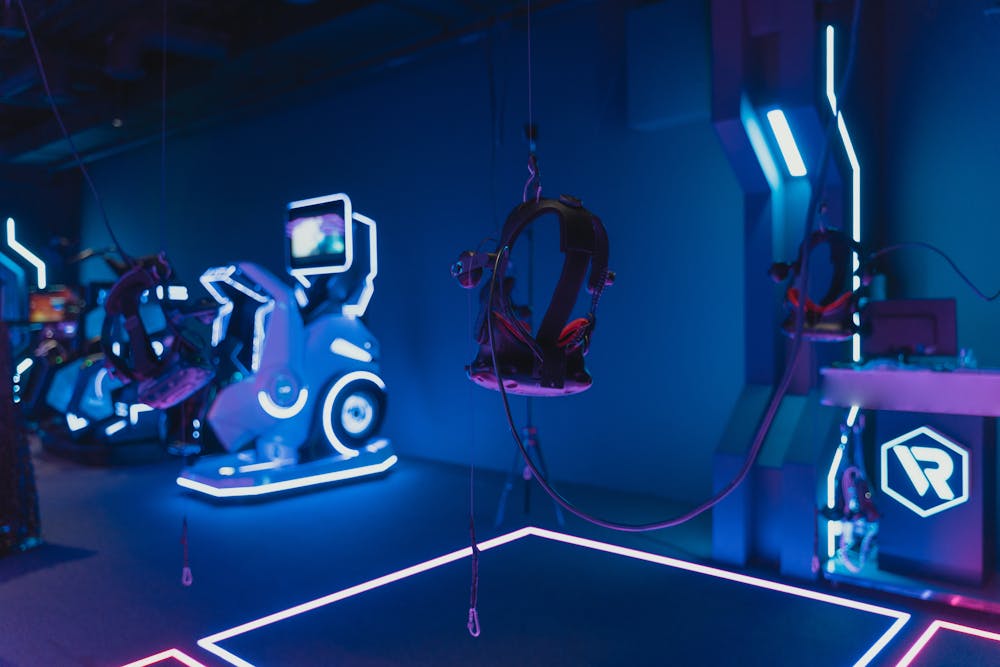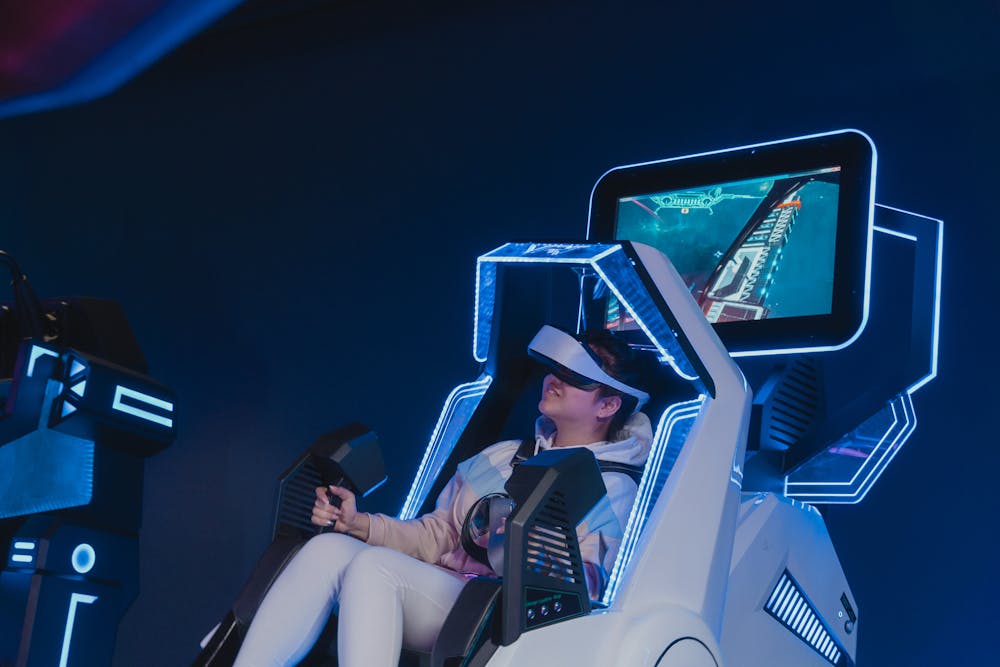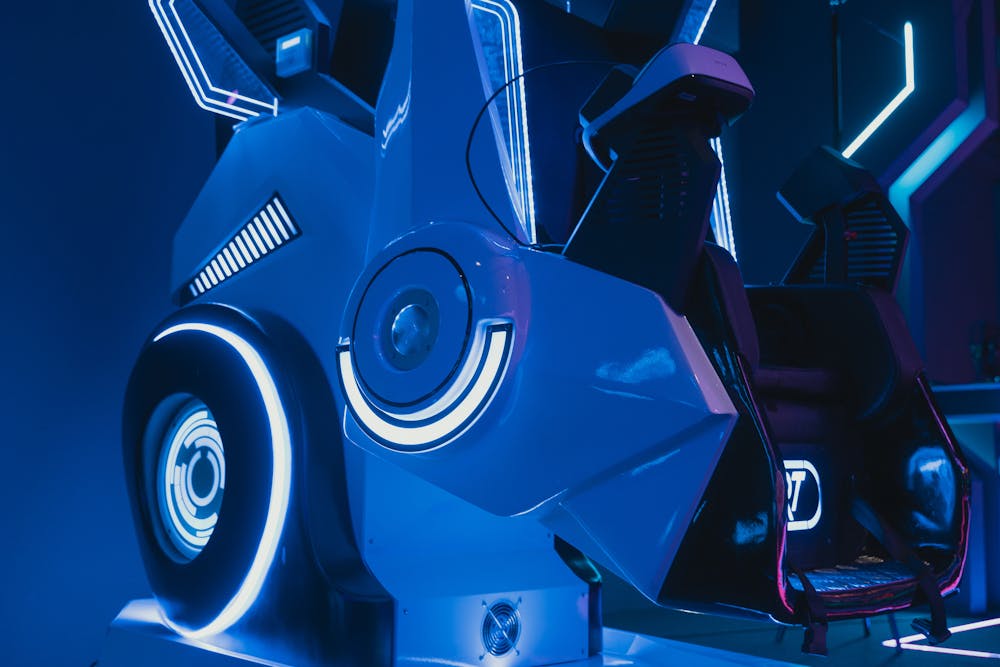Complete Guide to 360 VR Simulators: Installation, Features, and Maintenance Tips
Explore VRN0.1's complete guide to the 360 VR Simulator: step-by-step installation, standout features, and essential maintenance tips to maximize performance and longevity. Read expert setup and troubleshooting advice now.
- Key Features That Make 360 VR Simulators Stand Out
- Step-by-Step Guide to Installing a 360 VR Motion Simulator
- Space Requirements
- Installation Process
- Essential Maintenance Tips for Long-Term Use
- Daily Maintenance
- Weekly Maintenance
- Monthly Maintenance
- Common Issues and Troubleshooting Tips
- Motion Lag or Desynchronization
- Software Freezes or Crashes
- Hardware Wear and Tear
- Power Surges or Failures
- Conclusion
- Choose a Trusted Brand: VRN0.1
With the evolution of the virtual reality entertainment industry, the 360 VR simulator became a mandatory facility in the arcade halls, VR theme parks, and the immersive experiences centers. It can be a VR 360 flight simulator or a racing model at high speed, either way, nothing can be more immersive and exciting than these machines. So what is the correct method of installing them? What features matter most? And how to sustain performance?
You will not find something urgently needed about using a 360 VR motion simulator because this guide will tell you all the things you need to know starting with the installation and the features up to recommendation on how to maintain it so your investment is rewarded.
Key Features That Make 360 VR Simulators Stand Out
It is important to know the characteristics of a 360 VR simulator to select the best machine and ensure the highest user interaction. Such characteristics distinguish them among traditional VR systems and lead to their increasing popularity straight away.
First, the 360 VR simulator offers full rotational movement, allowing users to experience realistic motions that mimic real-life sensations such as flying, racing, or extreme sports. The ability to rotate 360 degrees horizontally, combined with tilting or pitching motions, immerses players in a fully dynamic environment rarely matched by traditional stationary VR setups.
Another critical feature is the integration of high-resolution VR headsets coupled with advanced motion tracking sensors. This ensures that visual cues correspond perfectly with physical movements, reducing motion sickness and enhancing realism. Many models also include surround sound systems and haptic feedback via vibrating seats or controls, further enriching the sensory experience.
The software content library is equally important. Leading 360 VR simulators often come preloaded with a variety of scenarios, including thrilling vr 360 flight simulator missions, roller coaster rides, space explorations, and racing games. Content updates from the manufacturer keep the experiences fresh, encouraging repeat plays and improving ROI.
From a business perspective, user-friendly operator interfaces and diagnostic tools streamline daily operations. Features like coin acceptors, QR code scanners, and remote monitoring enable efficient management and maintenance.
To conclude, realistic movement, high-quality VR visuals, immersive sound, and interactive content make the 360 VR simulator the undisputable star attraction because it is interesting to a broad demographic.

Step-by-Step Guide to Installing a 360 VR Motion Simulator
Installing a 360 VR simulator is a critical process that requires careful planning and precision to ensure safety and optimal performance. Below we outline the fundamental steps, starting with spatial considerations and ending with system calibration.
Space Requirements
Before unpacking the equipment, it is essential to secure a suitable location. Unlike smaller VR setups, a 360 VR simulator demands significant physical space to accommodate its motion range and user safety. Most manufacturers recommend a minimum clearance of 10 feet by 10 feet (approximately 3m x 3m) around the device to prevent collisions or injury during operation.
Ceiling height is another vital factor; a minimum height of 7 feet (about 2.1 meters) is typically necessary to allow the simulator’s motion platform to tilt and rotate freely without obstruction.
Ventilation should not be overlooked. The immersive experience can be physically demanding, causing users to heat up quickly. A well-ventilated room ensures comfort and helps maintain equipment longevity by preventing overheating.
Floor strength and stability are also crucial. The simulator’s motion platform can be heavy and vibratory, requiring a level surface with sufficient load-bearing capacity—often concrete or reinforced flooring.
Installation Process
Once the space is prepared, the installation typically proceeds as follows:
- Unpack and Inspect: Carefully unbox all components and inspect for shipping damage. The package usually includes the motion platform, VR headset, control consoles, wiring harnesses, and safety accessories.
- Assemble the Motion Platform: Securely mount the base, seating apparatus, and mechanical actuators. Precision is key here, as any misalignment can impair motion accuracy.
- Set Up VR Equipment: Connect the VR headset and sensors. High-end vr 360 simulators utilize multiple cameras or base stations to track player movements precisely.
- Wiring and Power Connections: Connect the system to a stable power source with surge protection. Networking may be necessary for software updates and remote diagnostics.
- System Calibration: Run manufacturer-supplied calibration software to synchronize motion responses with visual cues. This step minimizes latency and ensures player safety.
- Operator Training and Testing: Prior to public use, operators should be trained on machine functionality, safety protocols, and troubleshooting. Conduct test runs to verify smooth operation.
Working closely with a reputable 360 vr simulator factory or manufacturer during installation can help address challenges early and guarantee compliance with safety standards.

Essential Maintenance Tips for Long-Term Use
Maintaining your 360 VR simulator is key to maximizing uptime, user satisfaction, and equipment lifespan. Preventative care reduces costly repairs and helps identify issues before they escalate.
Daily Maintenance
- Clean the VR Headset Lenses: Use microfiber cloths to remove smudges and debris, ensuring a clear visual experience.
- Sanitize Headgear and Controls: Apply non-abrasive disinfectants after each user session, critical for hygiene especially in high-traffic venues.
- Inspect Motion Platform: Check for abnormal noises, vibrations, or visible wear around actuators and joints.
Weekly Maintenance
- Test Emergency Stop and Safety Restraints: Confirm all safety features are functioning correctly.
- Check Electrical Connections: Secure cables and verify there are no signs of wear or overheating.
- Update Software: Install firmware and content updates provided by the 360 vr simulator manufacturer to improve performance and add new features.
Monthly Maintenance
- Lubricate Moving Parts: If applicable, apply manufacturer-approved lubricants to mechanical components.
- Full System Diagnostics: Utilize onboard diagnostic tools or remote services to detect any hardware or software anomalies.
- Backup Data: Regularly backup user stats and system configurations to prevent data loss.
Adhering to these maintenance schedules keeps your 360 VR simulator running smoothly and ensures a safe, immersive experience for players.
Common Issues and Troubleshooting Tips
Even with the best care, issues may arise. Understanding common problems and their solutions helps minimize downtime.
Motion Lag or Desynchronization
If the motion platform does not align perfectly with VR visuals, users may experience nausea or discomfort.
- Solution: Recalibrate the motion sensors and VR tracking system. Ensure the environment is free of reflective surfaces or interference that may disrupt tracking.
Software Freezes or Crashes
This may result from outdated software or corrupted files.
- Solution: Regularly update the simulator firmware and software. Perform a system reset if necessary.
Hardware Wear and Tear
Actuators, belts, or seat restraints can degrade over time.
- Solution: Schedule preventative maintenance and replace worn components promptly with original manufacturer parts from a trusted 360 vr simulator factory.
Power Surges or Failures
Sudden power loss can damage electronics.
- Solution: Install surge protectors and uninterruptible power supplies (UPS) to safeguard against electrical issues.
Effective troubleshooting relies on timely detection, so regular operator training and thorough inspection routines are vital.

Conclusion
Investing in a 360 VR simulator is an exciting opportunity to enhance your entertainment venue with cutting-edge technology. However, success depends on understanding its key features, carefully planning installation, and committing to diligent maintenance.
By selecting a reputable 360 vr simulator manufacturer or working directly with a trusted 360 vr simulator factory, you ensure quality hardware, ongoing support, and access to the latest content. Remember to allocate sufficient space, follow detailed installation procedures, and maintain the system regularly for the best user experience and return on investment.
Choose a Trusted Brand: VRN0.1
Are you searching to have a reliable business partner in VR arcade business, then VRN0.1 is the name. Being a professional manufacturer of 360 vr simulators, we provide high performance simulators, and the abundant contents, services of shipping globally, the customization services and also the after-sale services. You can open your first VR arcade or add more games to your lineups and VRN0.1 will ensure you are reliable and innovative enough to stand out.
👉 Ready to start your VR journey? Contact VRN0.1 today to explore our 360 vr simulators for sale and take your entertainment business to the next level.




Solution
What is the service life of VR equipment?
VRNO.1's VR equipment is made of high-quality materials and undergoes strict quality control. The service life of the equipment is usually more than 5 years, depending on the frequency of use and maintenance of the equipment. Regular care and maintenance can extend the service life of the equipment.
Products
How does VRNO.1’s VR technology work?
Our VR systems use advanced headsets, motion tracking, and interactive controls to create an immersive, 360-degree experience. Players can engage with digital environments in real time, simulating real-world and fantastical scenarios.
Do you offer support and training for using VRNO.1’s VR systems?
Yes, we provide comprehensive support and training for all our VR products, ensuring that your staff is fully equipped to operate and maintain the systems.
Application
Does the device support wireless use?
Some VRNO.1 VR devices support wireless connection, which makes it easier to move freely in different spaces without worrying about cable restrictions, enhancing the immersion and freedom of the game.
What technical support does VRNO.1 provide?
We provide 24/7 technical support services, including remote technical consultation, equipment troubleshooting, software upgrades, and faulty equipment replacement. Ensure that your equipment can continue to operate efficiently and improve customer experience.


Experience our VR Shooting Simulator—an unattended arcade game with coin/card payment support, offering an immersive, hassle-free shooting experience for all players.

Experience the thrill of aerial combat with VRN0.1's VR Warplanes Realistic Air Combat Simulation. Our Shocked Sway Flying Combat VR Simulator immerses you in intense dogfights, delivering unparalleled realism. Perfect for flight enthusiasts, this Flying Combat VR Simulator promises an adrenaline-pumping adventure.

Want to know more updates?
If you have any technical questions or after-sales needs, please feel free to contact our service team.
We will wholeheartedly provide you with quick response and professional support to ensure the smooth operation of your VR & Arcade project.



 Scan QR Code
Scan QR Code
Whatsapp: +8618127818571
Scan QR Code
Guangzhou Skyfun Technology Co.,Ltd
skyfunvrgame
skyfun game